Konark is situated at 35 K.M distance from the famous religious and tourist centre of Puri and the capital city of Bhubaneswar (65 K.M.) ORISSA.

SITE

FORMATION
As the legend says that, King Narasimha Deva-I of the Ganga Dynasty had ordered this temple to be built as a royal proclamation of the political supremacy of his dynasty. A workforce of 12 hundred artisans and architects invested their creative talent, energy and artistic commitment for an exhausting period of 12 years. The king had already spent an amount equivalent to the state’s revenue receipts of 12 years. However the completion of the construction was nowhere near sight. Then the king issued a final command that the work be completed by a stipulated date. The team of architects headed by Bisu Maharana was at its wit’s end. It was then that Dharmapada the 12 year old son of the chief architect Bisu Maharana arrived there as a visiting onlooker. He became aware of the anxiety looming large among the architects. Although he did not have any practical experience of temple construction, he was thorough in his study of the theories of temple architecture. He offered to solve the confounding problem of fixing the last copping stone at the top of the temple. He surprised everyone by doing that himself. But soon after this achievement the dead body of this adolescent prodigy was found on the sea beach at the foot of the temple. Legend says that Dharmapada laid down his life to save his community.
LEGEND
In later ages the five supreme Gods worshipped by Hindu and In Orissa there are five different kshetras or religious centers celebrated for these Pancha Devata –
Ganesh (destroyer of obstacles and fulfiller of desires).
kshetra – Mahavinayak hills in the district of Cuttack
Vishnu (the cosmic sustainer of the phenomena universe).
kshetra – At Puri
Siva (the cosmic destroyer of the universe).
kshetra – At Bhubaneswar
Durga (the mother goddess and source of all energies).
kshetra – At Jajpur or Yajanapur
Surya (the life giving energy).
kshetra – At konark
MYTHOLOGY
- Myths and legends impregnate the whole city of Konark. There could be cited a number of reasons for the emergence of the temple. According to a legend, Samba, the son of Lord Krishna took great pride in his beauty. So much that he once committed a mistake of ridiculing a sage called Narada. The sage, bursting with rage, hit upon an idea to teach Samba a lesson. Somehow, the sage lured the boy to a pool where his step mothers, the consorts of Lord Krishna, were having bath. As Krishna got to learn of this immoral activity, he was inflamed and cursed his son with leprosy. However, before long, lord Krishna came to know that it was all a premeditated plan of the mischievous Narada. He suggested to his son that he go and worship the Sun god, the healer of all diseases. Samba followed the advise and spent 12 long years of penance and worship. Eventually, Surya instructed Samba to go and take a dip into the sea at Konark. So did the afflicted boy and surprisingly enough his leprosy was cured. Elated Samba made up his mind to built a temple in honour of Surya at the very spot. And that was how the temple came into being.
- A shallow pool of water is known as the Chandrabhaga , where even now crowds of pilgrims take a purificatory bath before sun rise on the seventh day of the bright half of the month of Magha (January-February). A fair also takes place on this occasion. Once in the year the deserted holy place of Surya thus throbs with religious emotion. This is likely a survival of an ancient practice following the construction of the temple. Magha – Saptami is mentioned in the Madala Panji as one of the festival of this holy centre. It is also referred to the Brahma Purnima in connection with the description of Konark.
- The actual temple seems to have an archetechtural setup with magnet at the top and bottom of the temple making the idol stand in air without any physical support.
SUN TEMPLE- KONARK
This temple built in 1250 AD by the Ganga King Narasimha Deva is one of the grandest temples of India and was referred to as the Black Pagoda. The ruins of this temple were excavated in late 19th century. The tower over the Garbagriha is missing, however the Jagmohana is intact.
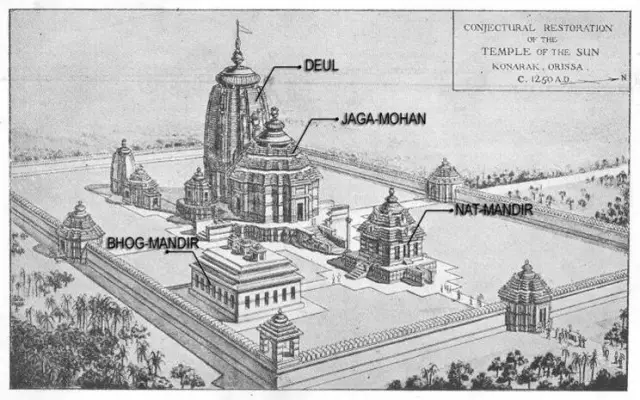
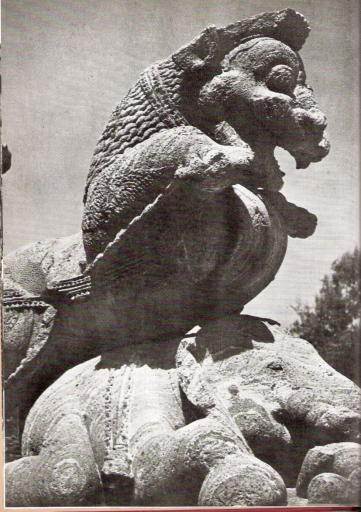
- The Temple: The Konark temple is widely known not only for its architectural grandeur but also for the intricacy and profusion of sculptural work. The entire temple has been conceived as a chariot of the sun god with 24 wheels, each about 10 feet in diameter, with a set of spokes and elaborate carvings. Seven horses drag the temple. Two lions guard the entrance, crushing elephants. A flight of steps lead to the main entrance.
- “In the details of measurements, it is mentioned that the once-existing kalasa and the lotus-finial, the padma-dvaja, were broken, though the iron rod called chumbaka-luha-dharana (magnetic iron rod), which most probably passed through the kalasa, was still in position”
- The nata mandir in front of the Jagamohana is also intricately carved. Around the base of the temple, and up the walls and roof, are carvings in the erotic style. There are images of animals, foliage, men, warriors on horses and other interesting patterns. There are three images of the Sun God, positioned to catch the rays of the sun at dawn, noon and sunset.
- All enclosed within a courtyard measuring 865 ft. by 540 ft.
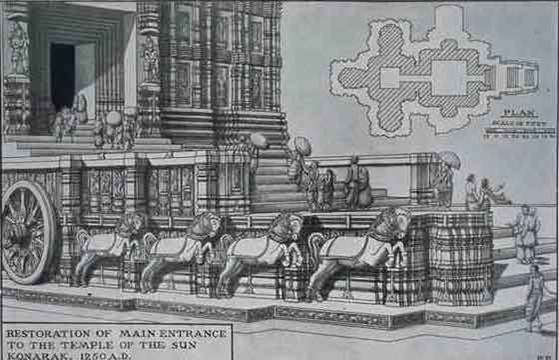
ARCHITECTURAL DISCRIPTION
- ALL ORRISAN TEMPLE HAVE INDO-ARYAN STYLE IN WHICH ALL TEMPLE HAVE SAME ARCHITECTURAL ELEMENT AND GENERAL CHARACTER . THE MAIN STRUCTURE IN THESE RELIGIOUS TEMPLES ARE DEUL AND MANDAPA.THE BIGGER STRUCTURE IS CALLED EVERY WHERE DEUL BUT THE MANDAPA IS ALSO KNOWN BY THE NAME OF JAGAMOHANA.
- THE TWO OTHER BUILDINGS USUALLY SUPPLIMAENTED WHERE FIRST NAT-MANDIR OR DANCING HALL AND SECOND IS BHOG-MANDIR OR HALL OF OFFERING .
Three different types of stone were used.
- Chlorite was used in the door-frame.
- Laterite was used in the foundation staircase and the centre of the platform.
- Khondalite, the most usual kind, was used elsewhere.
The stones were smoothly finished and then fitted together. They were laid horizontally, placed one upon another, and joined together with iron cramps and dowels. The workmanship was so perfect that the joints could hardly be seen. Designs were carved on them only after that.
IN KONARK TEMPLE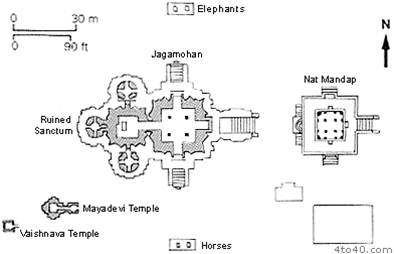
I.DEUL(GARBHA-GRIHA)
II.JAGAMOHAN
III.NAT-MANDIR
IV.BHOG-MANDIR
V.MAYA DEVI-MANDIR
VI.VAISHNAVA-MANDIR
DEUL(GARBHA-GRIHA)
- IT WAS THE BIGEST STRUCTURE IN THE TEMPLE ARENA OF 70M IN HIGHT.
- IT WAS COLAPSED IN 1837.
- IN ITS THREE SIDES IT HAS THREE SUBSIDIARY SHRINES WITH STAIWAYS LEADING TO THE NICHES, EACH CONTAINING A LIFE SIZE IMAGE OF SUN GOD (MORNING , MID-DAY & SETTING SUN).MADE UP OF GREYISH-GREEN CHLORITE STONE
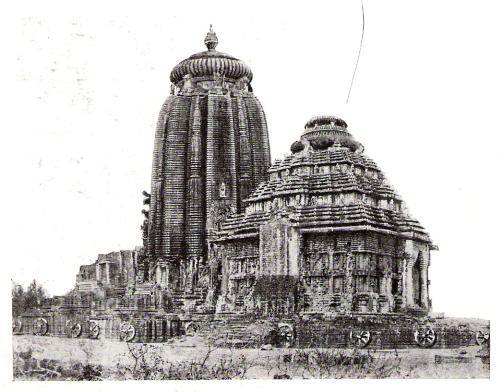
- IN ITS THREE SIDES IT HAS THREE SUBSIDIARY SHRINES WITH STAIWAYS LEADING TO THE NICHES, EACH CONTAINING A LIFE SIZE IMAGE OF SUN GOD (MORNING , MID-DAY & SETTING SUN).MADE UP OF GREYISH-GREEN CHLORITE STONE.
MORNING SUN MIDDAY SUN SETTING SUN
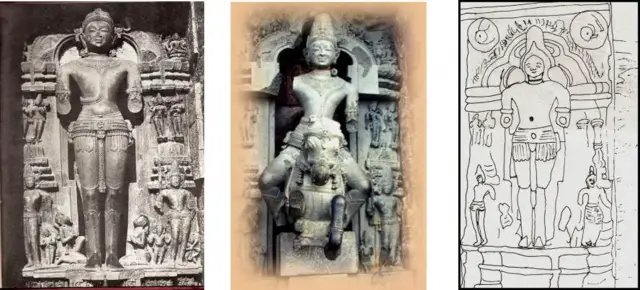
JAGAMOHAN
- IT IS A SQUARE PLAN BASED BUILDING OF 36X36 M AND 40M HIGH.
- FOLLOWING NAGARA STYLE.
- IT HAS LARGEST INTERNEL SPACE IN HINDU ARCHITECTURE OF 20 M Sq.
- IT HAS A VAST HALL INSIDE NO LONGER ACCESSEBLE. ITS CORBELLED ROOF, CARRIED ON FOUR MIGHTY PILLARS OF ABOUT 30 M HIGH HAVING
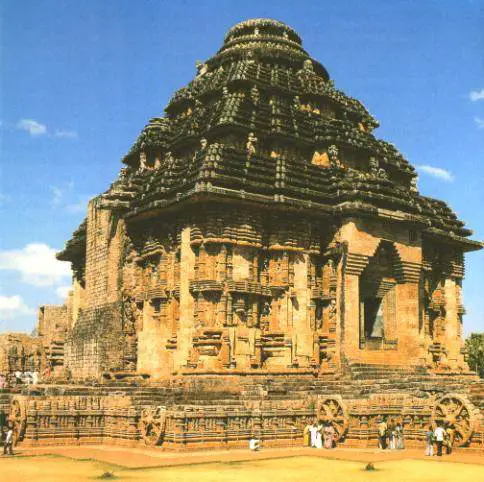
PRINCIPAL PART OF DEUL & JAGAMOHAN
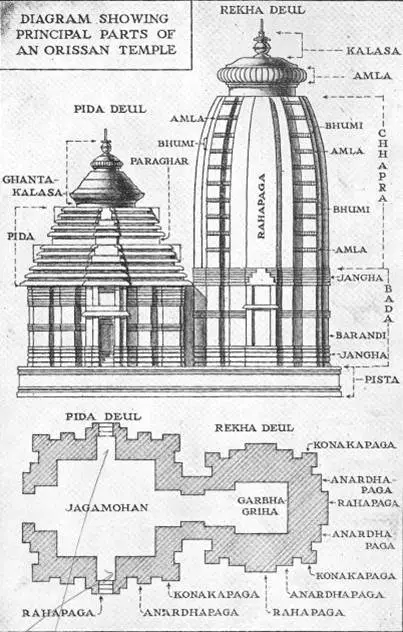
NAT-MANDIR
- IT WAS BUILT ON THE SAME PRINCIAL AS OF JAGMOHANA STANDING ON A BASEMENT OR A PLINTH,THESE HALLS WERE INVARIABLY OF ONE STOREY ONLY,AND THE ELEVATION OF EACH CONSISTED OF TWO PARTS, A CUBICAL PORTION(BADA) BELOW, AND APYRAMIDIAL ROOF ABOVE.
- IT’S PYRAMIDAL ROOF STANDS ON THE FOUR-SQUARE SYSTEM OF ROOF IRON BEAMS.
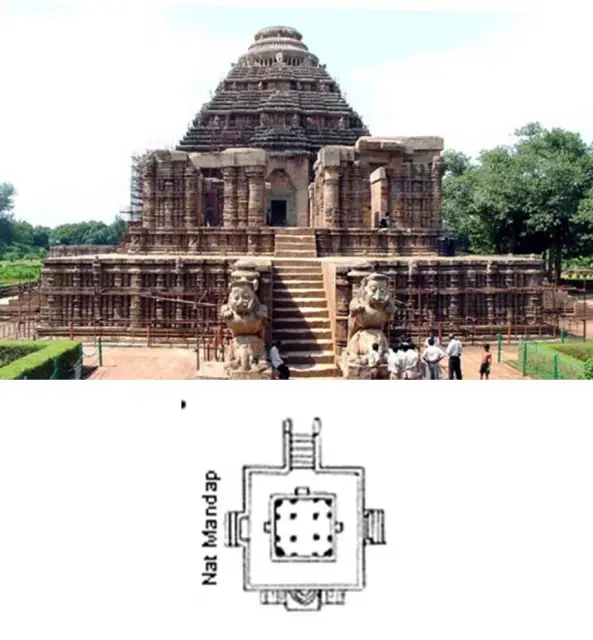
- SHOWING GROUP OF FOUR PIER HAVING FOUR SQUARE SYSTEM OF ROOF IRON BEAM
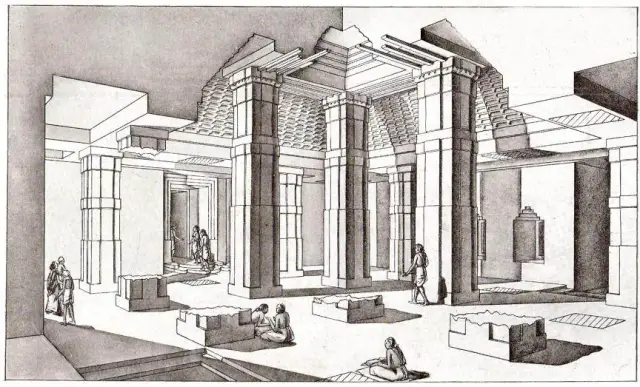
THE SCULPTURE OF THE SUN TEMPLE
- VIEW OF WEST WALL OF NAT MANDIR.
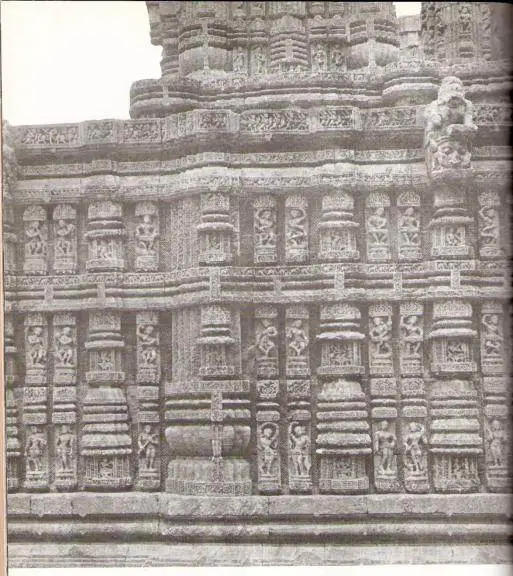
THE SCULPTURE OF THE SUN TEMPLE
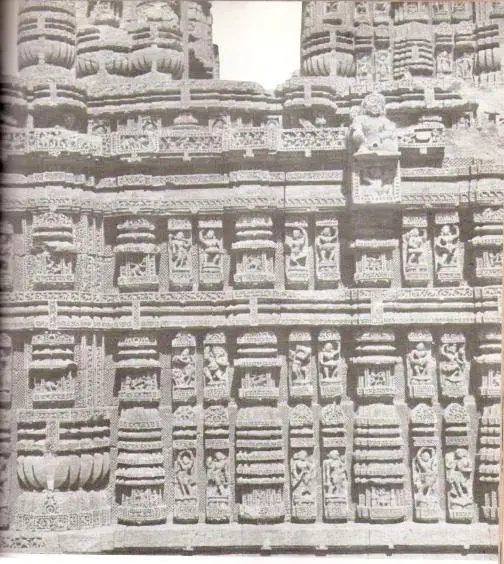
THE SCULPTURE OF THE SUN TEMPLE
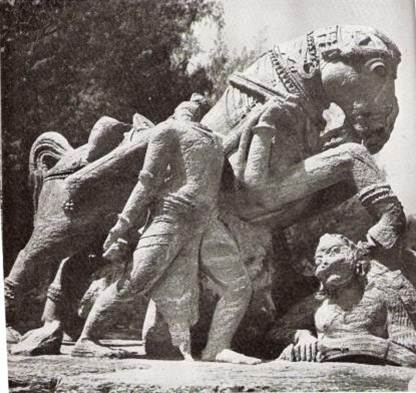
- A PICE OF MASSIVE ROCK-CARVING IN WHICH AN AGGRESSIVE HORSE STEMPING ON THE BODY OF AN ENEMY WARRIOR.
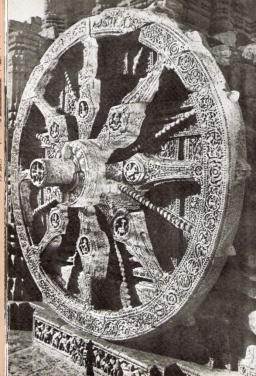
- WHEEL OF CHARIOT OF SUN TEMPLE.
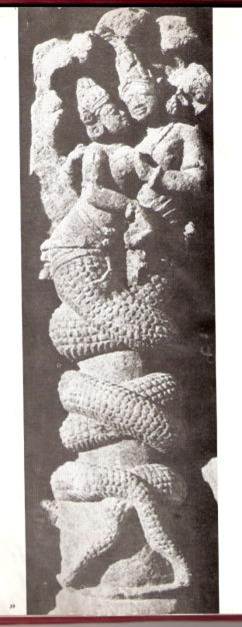
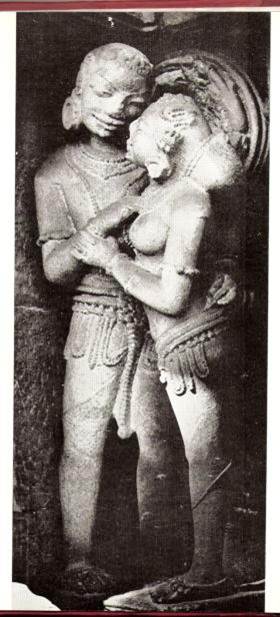
THIS PANEL SHOWS THE PREPRATORY STAGE OF ABANDON. THE SMILE ON THE FACE OF MAN IS BURCING INTO DESIRE AS HE PULLS THE WOMAN TOWARDS HIM.
APART FROM THE SYMBOLIC UNION OF TWO SOULS CONCIVED THROUGH THE MALE AND FEMALE SNAKE.
THE SCULPTURE OF THE SUN TEMPLE
MASSIVE CARVING SHOWS HOW THE CUSTOM OFFICIAL OF RAJA IN HARBOUR NEAR KONARK RECEVING THE STRANGE ANIMAL FROM AFRICA.
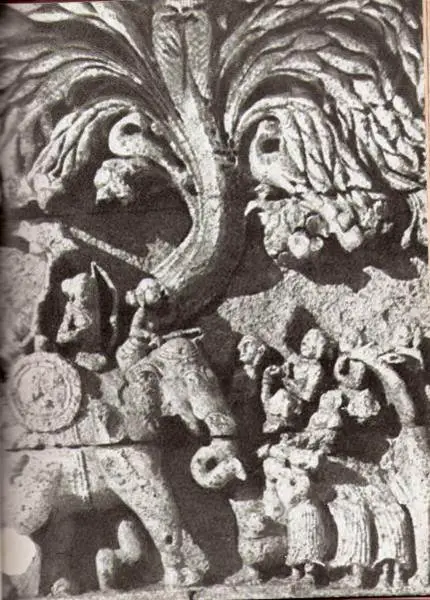
THE SCULPTURE OF THE SUN TEMPLE
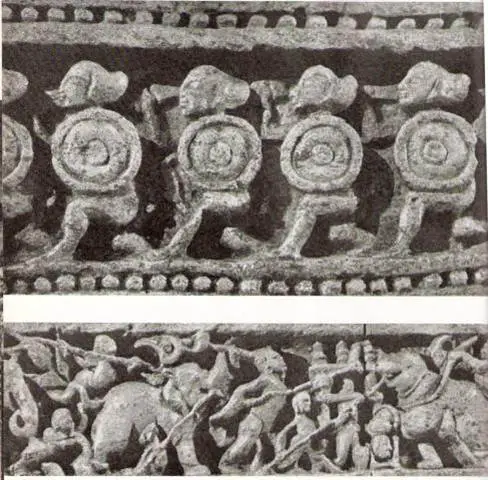
- SHOWING WARRIOR WITH SHIELD ON THE MARCH
- THE OPERATION OF CATCHING ELEPHANTS.
THE SCULPTURE OF THE SUN TEMPLE
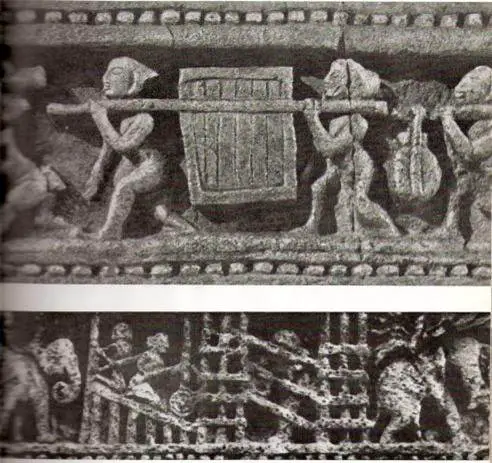

the information given is very
the information given is very useful.
Rain water drops from a
Rain water drops from a position at top at a particular place of the temple platform stone at many places. this phenomenon creates a dip on the platform stone logging rain water. The platform stone is wearing off. A measurement to check dropping of rain water is needed very urgently.
Do u no where from the
Do u no where from the Khondalite stone broght?and how?
Amazing thank you
Amazing thank you
Hi Ashish Gautam & Gaurav
Hi Ashish Gautam & Gaurav Kumar,
This is a good information given. I thank you very much for sharing this stuff with us. Please let us know/update if you have any other details about the Sun Temple. As I am planning to visit Konark, would like to know more of it, before I go there.